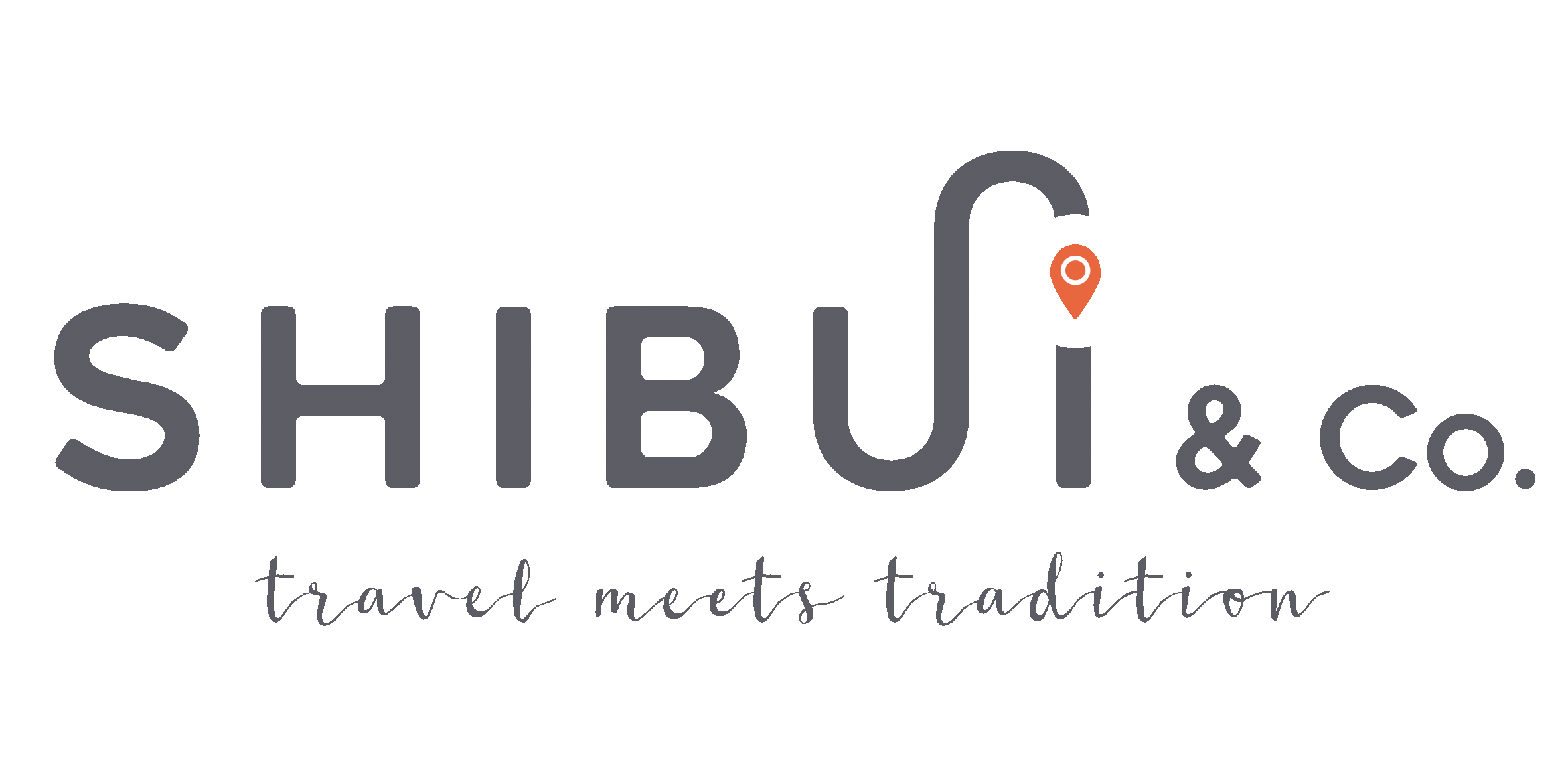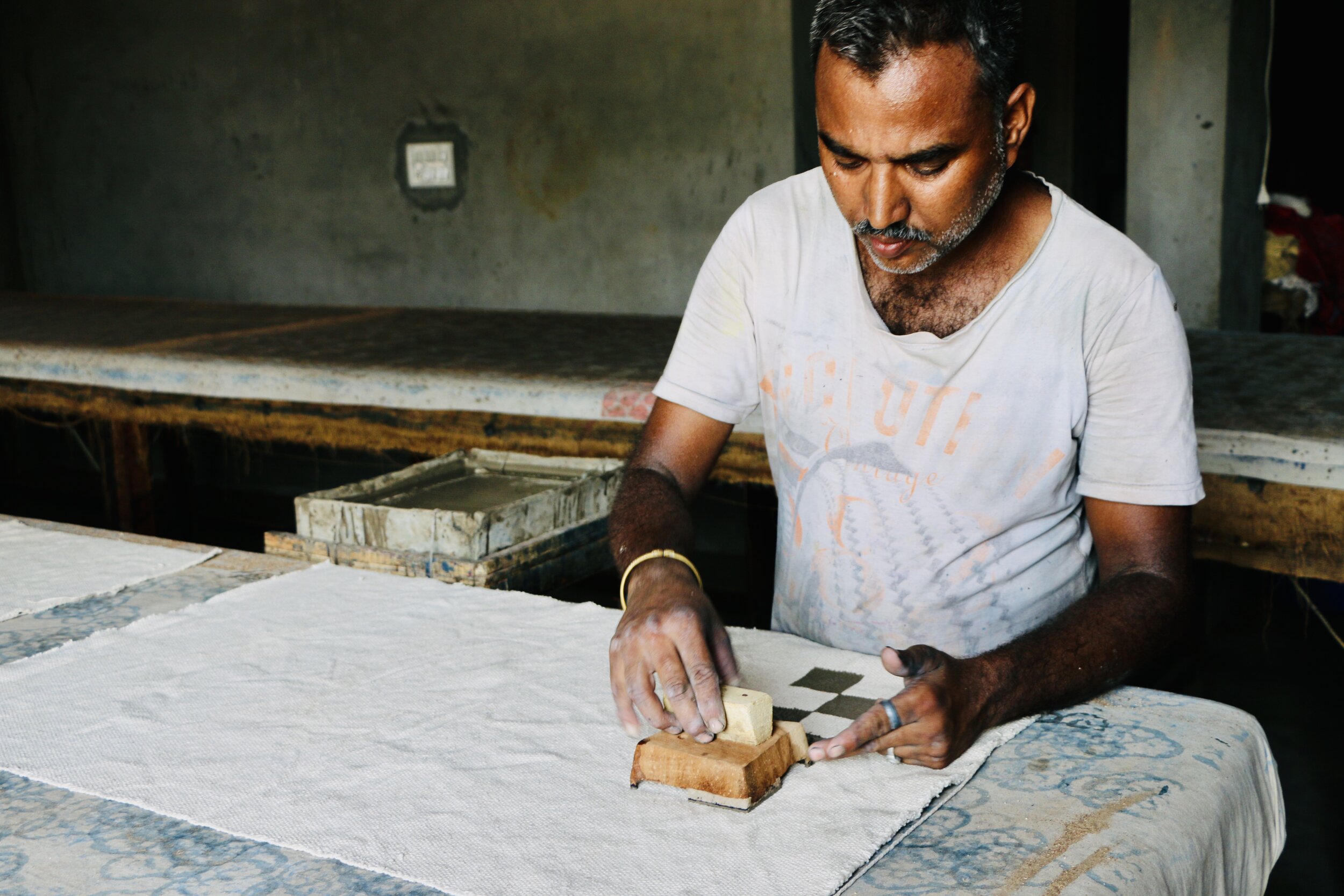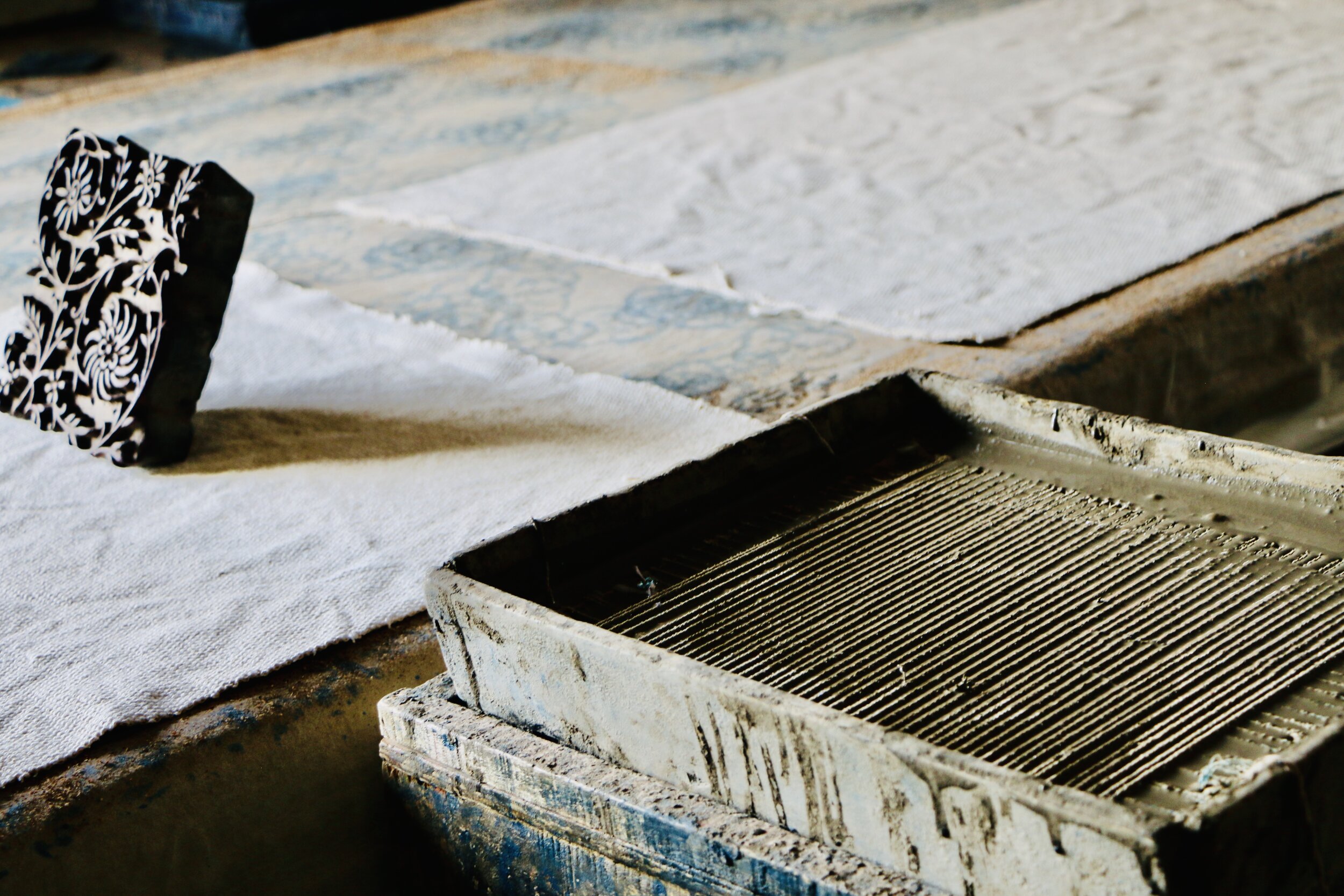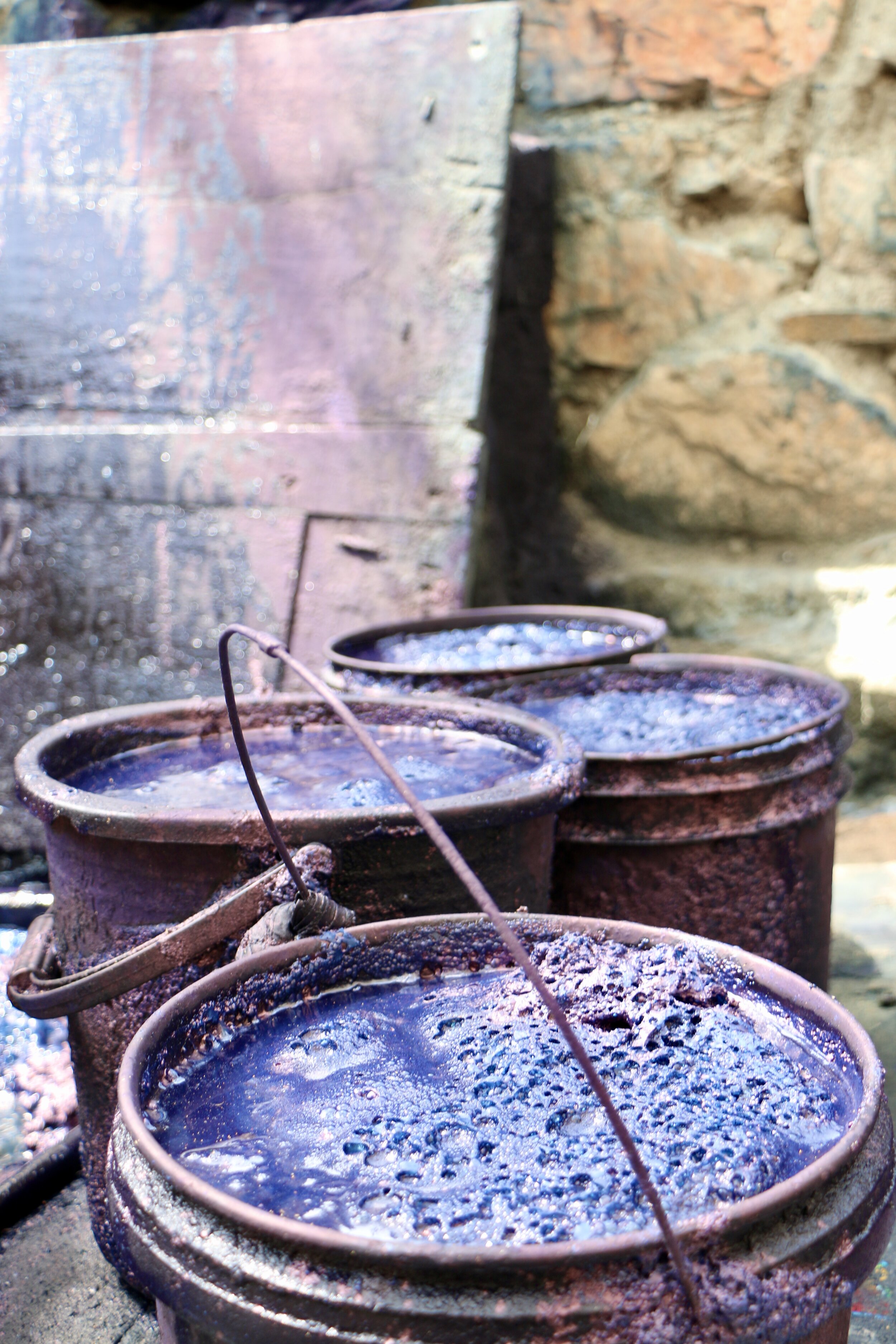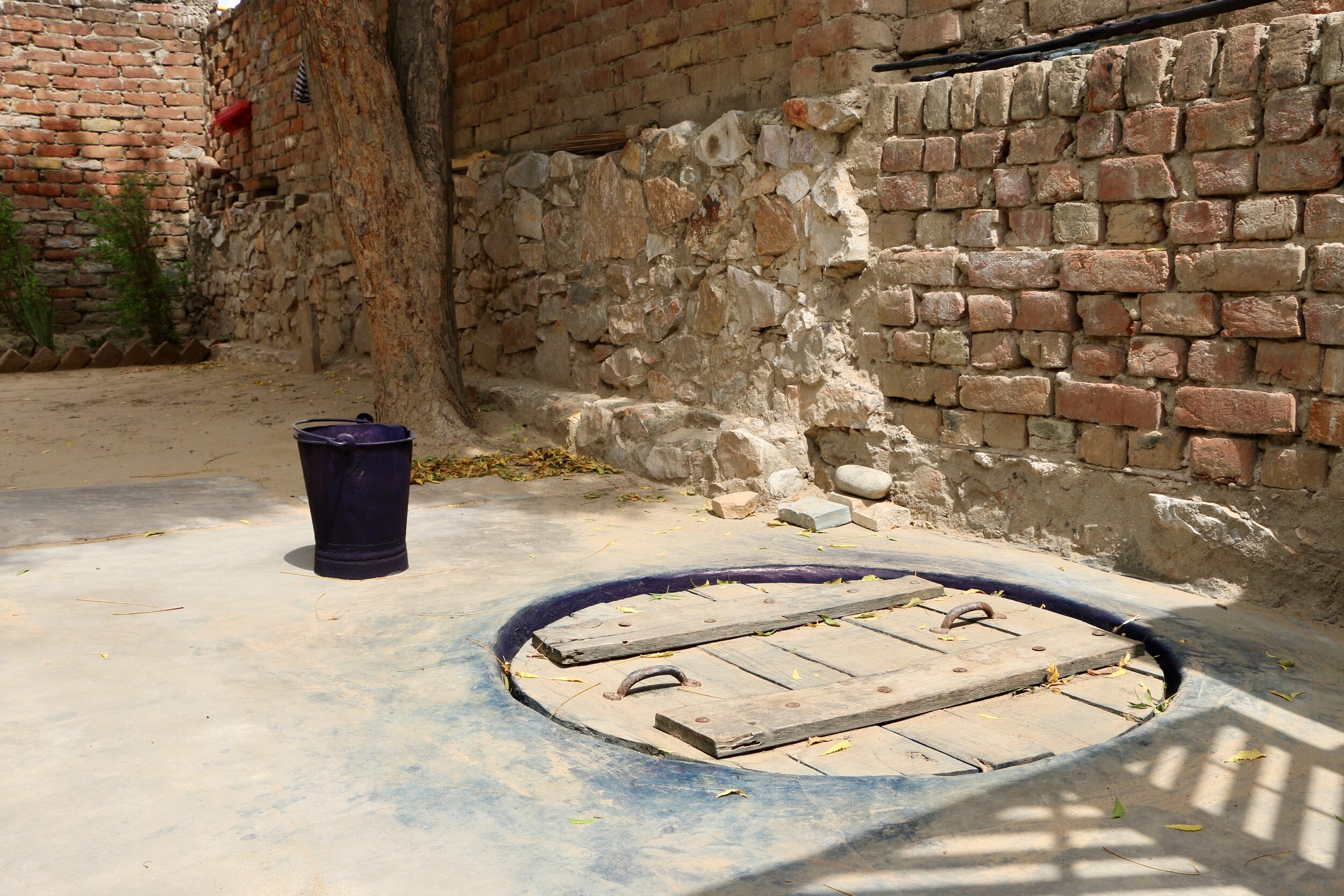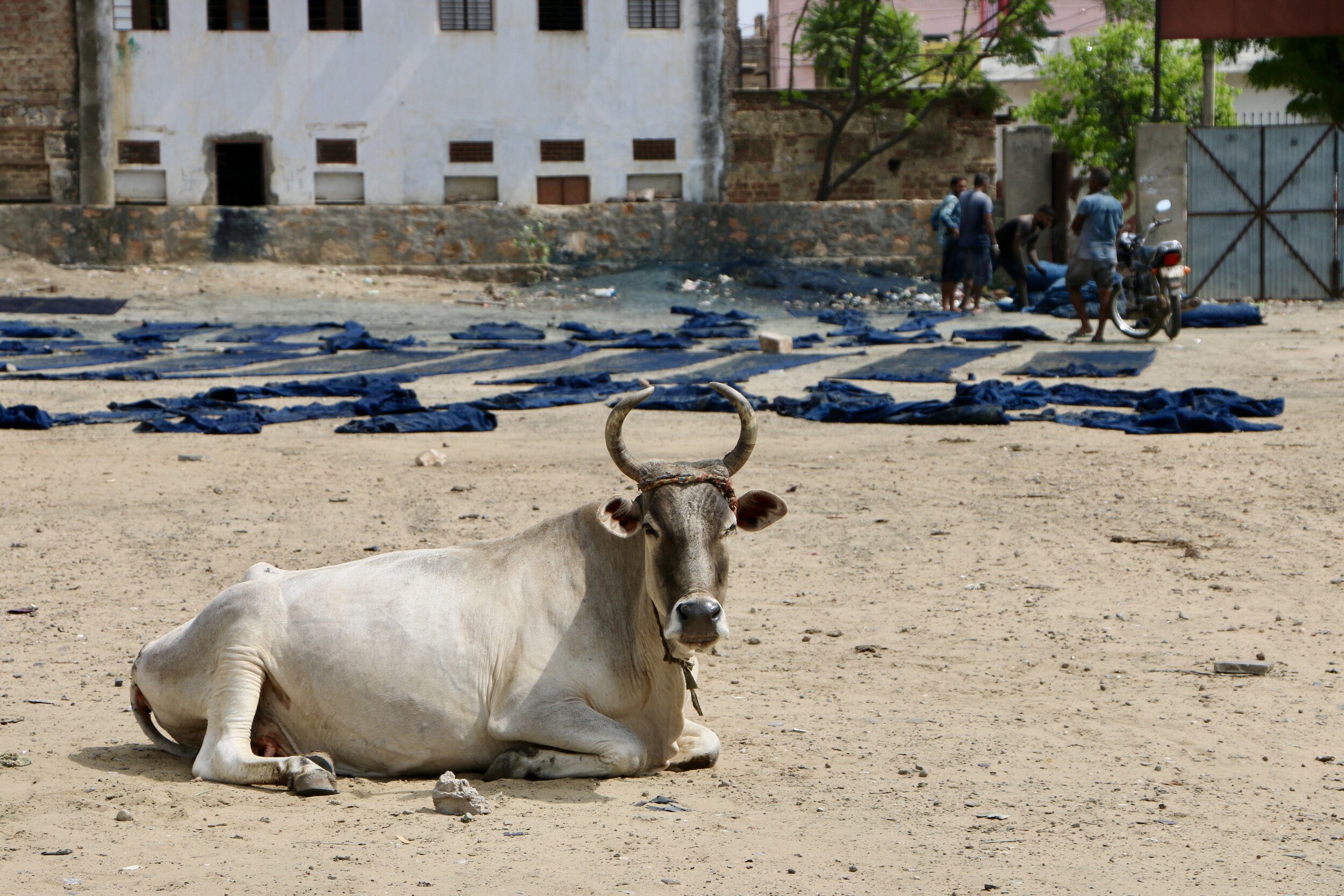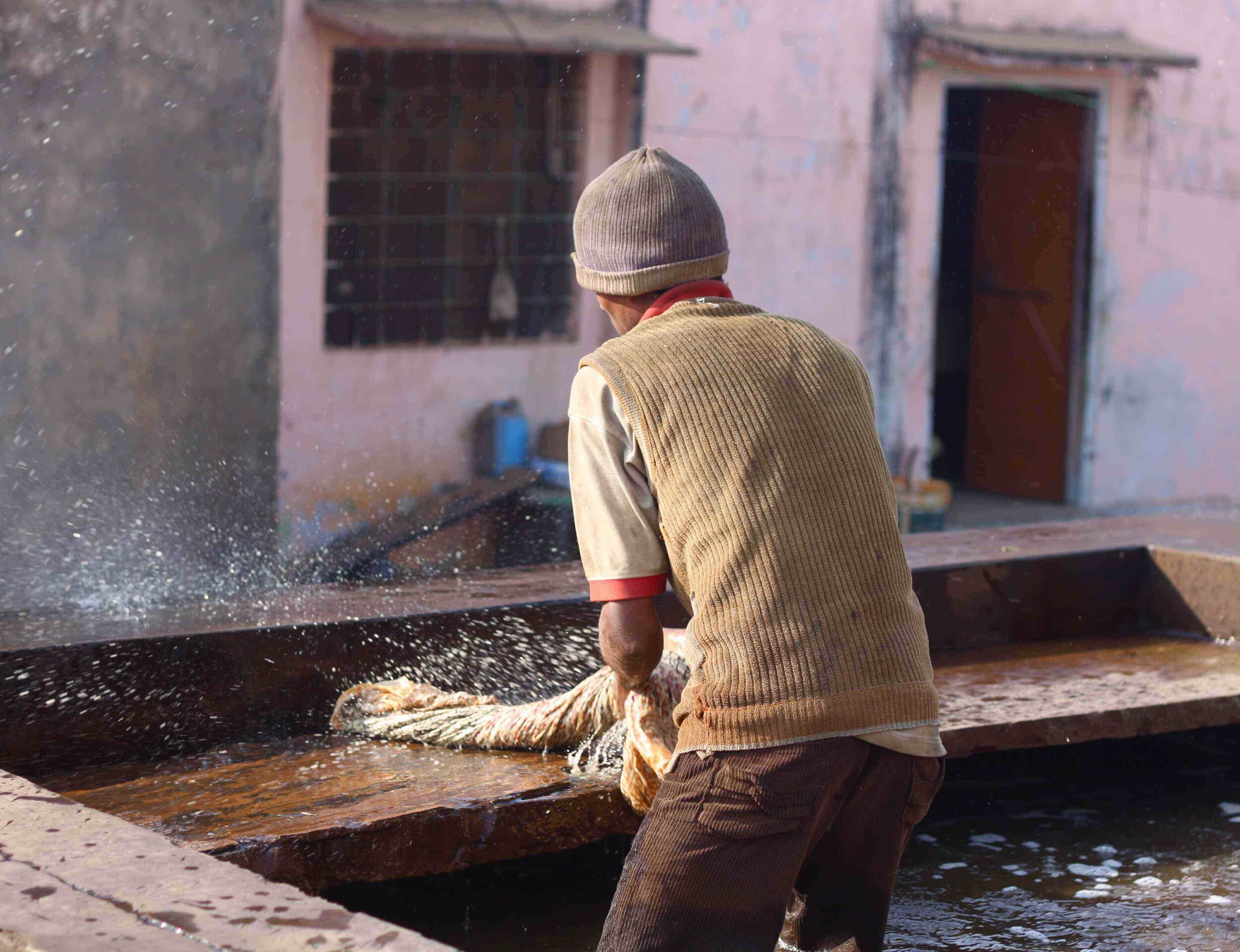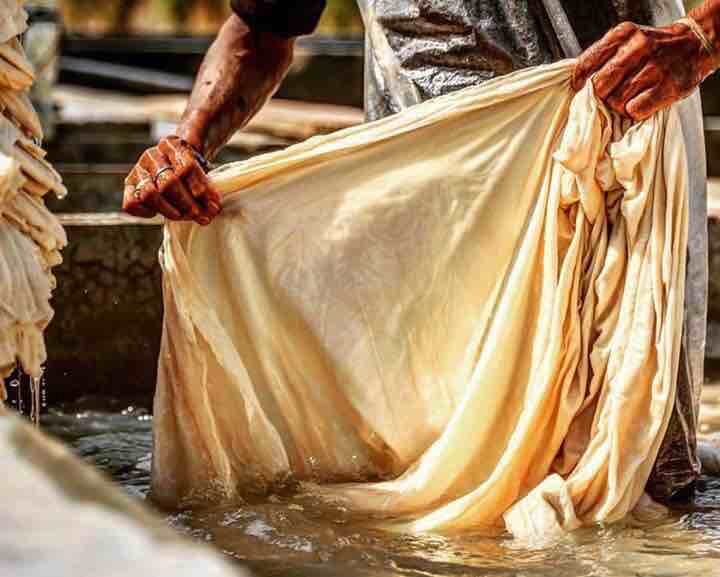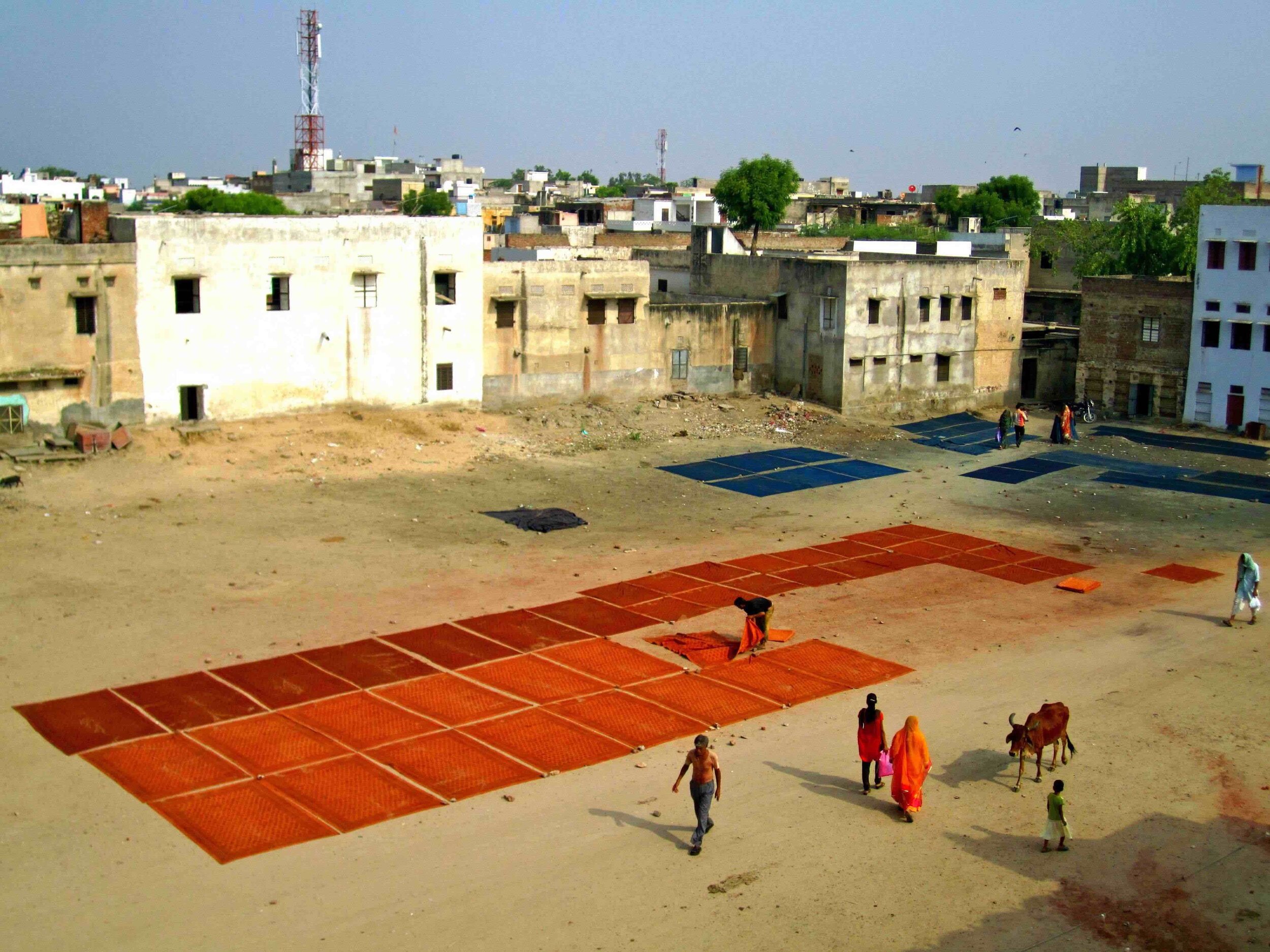SLOW MADE in India: Dabu and woodblock printing
Stamp of Approval
SLOW MADE STUDIO BAGRU | DESTINATION india
INTERVIEW WITH JEREMY FRITZHAND (Founder/Managing Director, Studio Bagru)
PHOTOGRAPHY CONTRIBUTED BY JEREMY FRITZHAND
Woodblock printing in India is an old-world trade that still produces mile after mile of beautiful fabrics that could easily wrap the world!
Jeremy Fritzhand is the founder behind Studio Bagru in Rajasthan. He's been collaborating with these traditional artisans for years and is on a mission to help protect and empower these hard-working communities, so that their ancestral craftsmanship never fades. He takes us through the process of this 4000-year-old tradition… one manual woodblock print at a time.
WHERE IS STUDIO BAGRU AND WHAT INSPIRED YOU, AS THE FOUNDER, TO WORK WITH THE ARTISANS IN INDIA?
Studio Bagru has a retail shop in Jaipur and a production studio in Bagru, Rajasthan. We are continually inspired by the traditional motifs and process of block printing in Bagru. Indian block printing has made its mark onto textiles and fashion industries around the world since the 70s. Our recent collaborations with Mahila Print, ImPrinted.Story and CIPRI Cultural Intellectual Property Rights Initiative have provided a new model to help protect collaborative partnerships that rely on local artisan craftsmanship, designs and adapted innovations into the future.
2020 IS UNLIKELY TO BE FORGOTTEN IN A HURRY. WHAT HAS BEEN LEARNT AND HOW DO YOU THINK THE WORLD CAN COLLECTIVELY HELP TRADITIONAL CULTURES AND ARTISAN TRADES SURVIVE INTO THE FUTURE?
The last three decades have been disastrous for the handicraft communities worldwide. It’s only in the last five years that advocacy for these industries has been taken to the frontline, with mass consumerism finally awakened by the environmental and social impact that fast fashion has had on the world. Thanks to a more conscious consumer, these high risk communities of craftspeople are seeing light in a previously dim landscape. We must all now do our part to amplify their voices and help support their traditional culture, knowledge and skills to help empower artisan communities whenever possible.
WHERE DOES THE CREATIVE DIRECTION FOR A STUDIO BAGRU PROJECT ORIGINATE?
Studio Bagru brings artisans and designers together to create truly unique pieces of textile art. The creative directions often overlaps between traditional craftsmanship and modern design requirements. It is a collaborative process where all parties involved are equally respected for their creative skills, inputs and outputs.
DO YOU LIVE IN INDIA TOO? IF SO, WHAT IS THE BEST THING ABOUT YOUR EXPERIENCE AND HOW HAVE YOU AND YOUR ARTISAN PARTNERS MANAGED THROUGH THE GLOBAL PANDEMIC?
Yes, I am based in India. At the early stage of the pandemic we started an emergency fund for women artisans in Bagru. This experience has made us realise how important it is to have this type of fund ready for the artisan community ongoing. It is still unclear of the long term effect the pandemic has on the handicraft industry worldwide, but we hope it encourages consumers to appreciate and support slow-made production much more.
CAN YOU SHARE A LITTLE ABOUT THE HISTORY OF WOODBLOCK PRINTING IN INDIA?
In India, block printing is said to be a 4000+ year old trade, dating back to the Harrapan Civilisation from the Indus Valley. In the towns of Bagru and Sanganeer, block printing dates back to the 17th century. Woodblock fabrics were printed for special occasions and also as a traditional way to differentiate cultural communities throughout India.
WHAT REGION IS WOODBLOCK PRINTING RENOWNED MOSTLY? There are many unique, woodblock printing communities across India, starting from Ajrakpur in Gujarat all the way to Kolkata in West Bengal. Bagru is most renowned for using red and black inks as well as an ancient reverse printing technique called ‘Dabu’, or resist printing, using a resist mud mix and indigo dye.
WHAT IS THE HISTORY BEHIND USING WOODEN STAMPS AND HOW ARE THE DESIGNS CHOSEN?
Traditionally, specific motifs and designs were used for special occasions and as a cultural differentiator. For example, a Jajam is an intricately printed floor covering approximately 10-12 feet long and 8 feet wide used to decorate the floor of temples and homes for special occasions. Rekh blocks are outline blocks that act as a guide for Datta blocks and a Gadh block is used to stamp the background designs with colour instead of dyeing the fabric.
WOODBLOCK CARVING IS AN ADDITIONAL SKILL TO WOODBLOCK PRINTING. ARE THE TWO PRACTISED BY THE SAME ARTISAN COMMUNITIES OR ARE THEY CONSIDERED SEPARATE TRADITIONS?
The carving and printing communities are considered two separate traditions that play complementary roles in the making of woodblock-printed textiles.
DABU and Block Printing Process by Studio Bagru
BOTH OF THESE HANDICRAFTS ARE MANUALLY INTENSIVE YET HIGHLY-REGARDED TRADES , BY TRADITIONAL ARTISANS TO THE REGION. DO THESE SKILLS REMAIN WITHIN ONE CASTE (OR FAMILY)? HOW LONG DOES IT TAKE TO LEARN?
Block carving is traditionally passed on from father to son. Apprenticeships commence around the age of 12 and then they start working full time from the age of 18. Similar apprenticeships happen in the block printing communities also.
WHAT IS THE PROCESS OF CARVING WOODBLOCK STAMPS?
The most common wood used in Bagru for blocks is Sheesham wood. (Similar to Cherrywood). It is a hardwood that maintains its shape over time and has good durability. After the wood is cut into 1.5 inch slices it is stacked and aged in the back of a workshop for over a year, until it is thoroughly dried. Once the wood is dry the surface is polished again and a thin layer of white paint is brushed on. From there, a block carver traces the motif onto a piece of transfer paper from a printout. The transfer paper is placed on top of the wood. Using a very fine, steel chisel and wooden hammer the outline of the design is carved onto the surface of the block. Once the outline is completed the carver removes the transfer paper and fills the missing lines using a pen. He then uses various steel chisels to carve away at the block until the design comes to life.
The carving process usually takes two days, for a 6 inch, moderately detailed block design. One day for preparation, (ie. stencilling, outlining and the start of carving), and one day for carving to finish. Once the block is carved it is soaked in peanut oil for five to seven days in order to extend the life of the block.
ARE WOODEN STAMP DESIGNS SYMBOLIC?
Yes. Most communities have their own specific Bhuti (floral motif) and you will often find these motifs printed onto the turbans of village elders.
ARE YOUR DESIGNS UNIQUE TO STUDIO BAGRU OR INSPIRED FROM THE ARTISANS?
Most regions around Jaipur use floral motifs and tribal designs for cultural definition. Studio Bagru is currently only using our signature flower wheel design (phul chakra) on products we make. The same design incorporated into our logo.
WHAT IS THE TYPICAL LENGTH OF FABRIC PRINTED BY HAND AND WHAT’S THE LONGEST PIECE YOU’VE PRINTED AT STUDIO BAGRU?
Typically fabric is printed on 5 to 12 metre segments. 5 metres is good for kurta pajama sets, 6 metre segments are perfect for saris and 7 to 12 metre segments are for running fabric that will be used to make garments. Bedsheets and scarves are also printed at various sizes and lengths.
